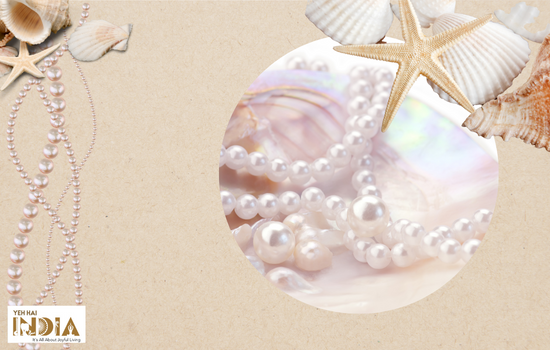The ivory hued gemstone is full of beauty, class and sophistication and is in no way lesser in appeal than expensive diamonds.
Pearls are naturally formed gems of the seas. They are considered timeless as there is nothing more elegant than pearl jewellery.
People from countries all around the world have used pearls in their jewels ever since the 1st millennium BCE. Garuda Purana, the Hindu scripture from that period, has documented records of the Nine Sacred Pearls.
Pearls also can be found mentioned in other religious scriptures of Christianity (New Testament) and Islam.
With the increasing desire to own and wear pearls, and their rare occurrence in nature, people started finding ways to culture them off the sea.
The way they are formed is one of the most important factors that decide the value of pearls.
Naturally formed pearls are rare and worth more than their cultured counterparts however high in quality they might be.
In this article, we have discussed in detail the various types of pearls and how they are grown.
How is a Pearl Grown?
In nature, pearls are formed as a result of a defence mechanism inside the shell of a pearl oyster. Sand, fishbone or any other irritants that enter the oyster shell trigger a protective mechanism that induces the secretion of nacre over the irritant.
This nacre is a composite material composed of aragonite (a form of calcium carbonate) that appears iridescent on the inner layer of the shell of molluscs. They are also popularly known as the mother of pearl.
The iridescent phenomenon of the nacre is known as orient. Unlike the popular idea of pearls being white, natural pearls occur in a variety of colours – white, cream, pink, yellowish brown, silver and even black.
Pearls are very rare to find in their natural habitats. Humans have been exploiting the natural mollusc colonies in the seas which is the primary reason for their rarity in nature.
However, over years the process of nacre formation has been replicated artificially in a controlled environment.
Natural Pearls vs Cultured Pearls
Natural pearls are formed in the bodies or mantle tissue of molluscs around microscopic irritants without any help induced by humans.
Cultured pearls are those that are grown in freshwater by inserting an irritant into the body of the mollusc to initiate the nacre formation.
Types of Cultured Pearls:
1. Akoya Pearls
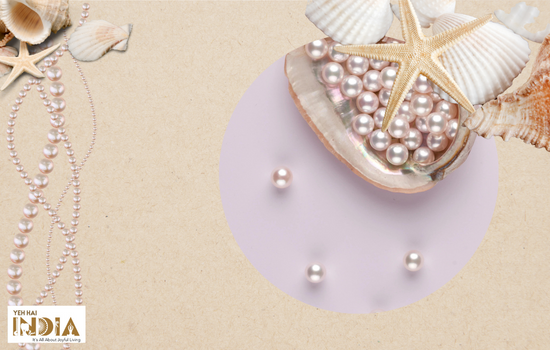
Akoya pearls are cultured in saltwater oysters in the coastal areas of Japan, Vietnam and Southern China. The oyster species used for culturing Akoya pearls are known as Pinctada fucata martensii.
Akoya pearls are typically white in colour with the characteristic sheen that makes them one of the most coveted types of pearls in the world.
They may also be produced with golden or silver-blue undertones. Their sizes vary between 2 mm and 10 mm, with the largest varieties being the most valuable.
Recommended Story – Gemstones and their Significance in India
2. Freshwater Pearls
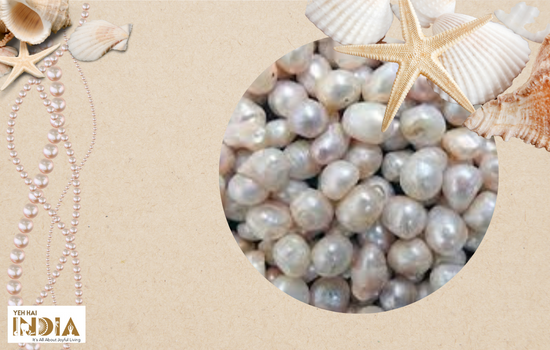
Instead of ocean molluscs, freshwater pearls are cultured inside of freshwater mussels. As the most commonly available variety of pearls, they are more affordable than the other types.
These are grown widely in China and are available in shades of pink, white, peach and lavender.
They are also treated with dyes to induce the desired shade of colour. Some freshwater pearls are dyed black and exhibit a violet iridescence that gives an excellent shimmer on the surface of the pearls.
They are called Peacock pearls because of their colouring. The pearls grow from 2 mm to 12 mm in diameter and some are as big as 15 mm.
3. Tahitian Pearls

Tahitian pearls come from the coasts of French Polynesia. These come from black-lipped oysters and are the only naturally black pearls that occur on their own.
Their surfaces are shiny and metallic grey in colour. Some of them are darker in shade and rarer than others which makes them more valuable in the market.
Their common diameter ranges between 8 mm and 15 mm and there are those that are larger than 15 mm in diameter.
The larger ones are very expensive and very rare. The Tahitian pearls are not treated to any colouring treatments after harvested from the oysters.
4. South Sea Pearls
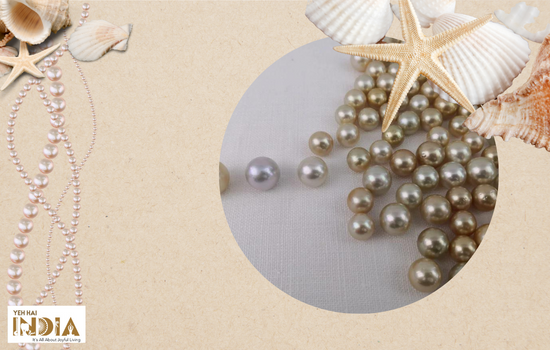
South sea pearls are the costliest of all the different varieties of pearls available in the market. They are also the largest variety among them.
They grow in the size range of 8 mm to 20 mm. South sea pearls larger than 15 mm in diameter cost more than Rs 75,000 per pearl.
Their name comes from the coral triangle region of dangerous waters between Australia, Indonesia and the Philippines. Their colours vary between silver, pink or gold.
5. Baroque Pearls
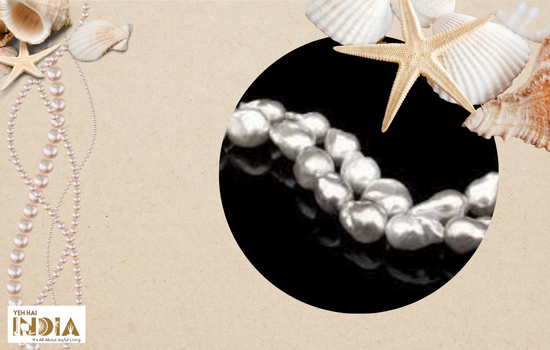
Baroque pearls are those that are not round in shape as the traditional pearls. In terms of cost and value, traditional pearls are definitely worth more.
But with their unique shapes, they are preferred by people who want to use them on customised jewellery with gorgeous designs.
Usually, the baroque pearls come in pastel pink and glossy white shades. The darker shades fetch a higher price too.
Types of Baroque Pearls:
- Twin Pearl
- Coin Pearl
- Rice Pearl
- Egg Pearls
- Heart Pearls
- Keshi Pearls
- Seed Pearls
- Round Pearls
- Button Pearls
- Mabe Pearls or Blister Pearls
Summary:
Pearls are the gems of the seas and are formed inside the shells of molluscs in salt water or fresh water. They are formed in response to any external irritant such as sand or fish bone entering the shell.
Nacre or an inorganic-organic composite material is secreted by the mollusc layers upon layers which then harden over the years to form a pearl.
Although the exact process of formation of this nacre is not known, humans have replicated the nacre secretion by manually injecting an irritant into the shell.
Since the occurrences of natural pearls have become extremely rare with the exploitation of their natural habitats in the seas, even cultured pearls are worth large amounts of money based on their shape, texture, sheen and colour.
Akoya pearls, freshwater pearls, Tahitian pearls and South sea pearls are some of the most popular varieties of pearls cultured in the world now.
There is another variety of pearls, called the baroque pearls, which differ from the traditional pearls in shapes. These pearls come in unique shapes and make excellent choices for custom designs.
Given the rare availability of natural pearls, cultured pearls have emerged as a clear winner to cater to the style ambitions of a large section of women around the world.
Also Read – Best places to buy Gemstones in India


